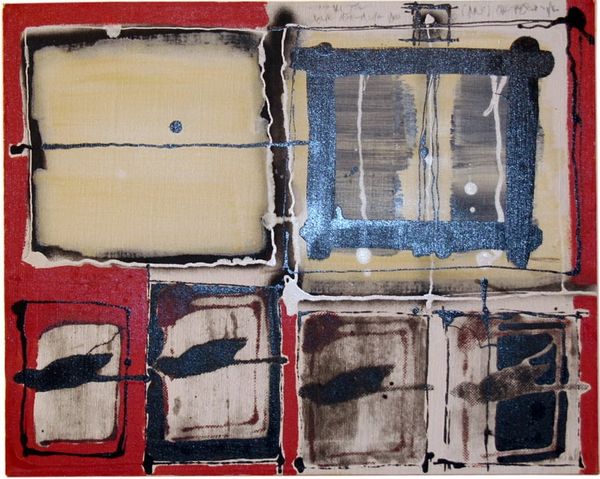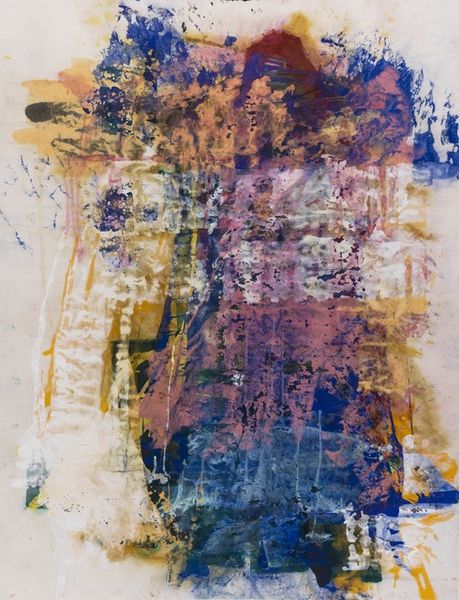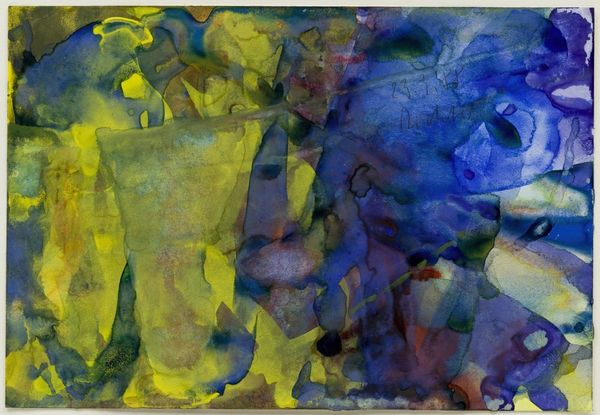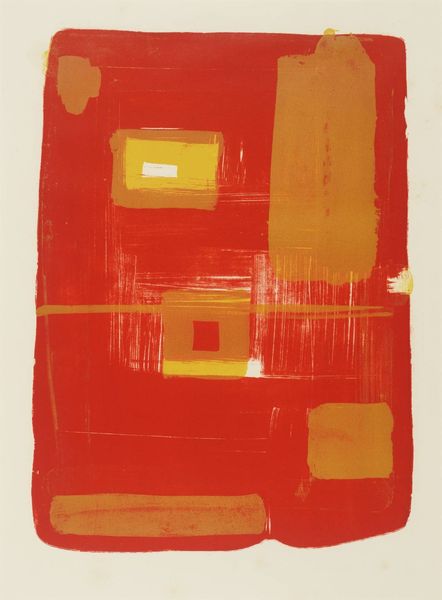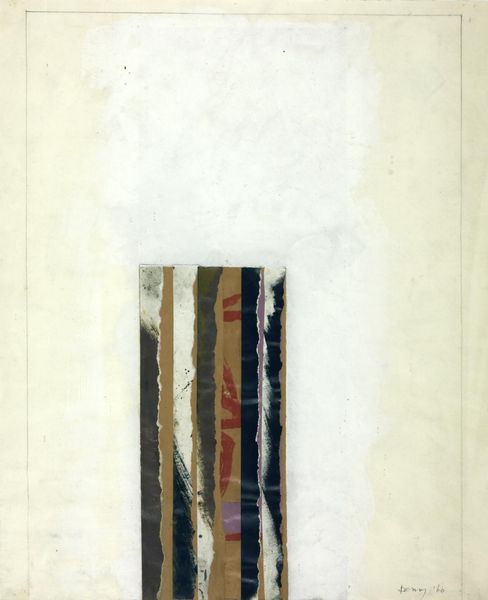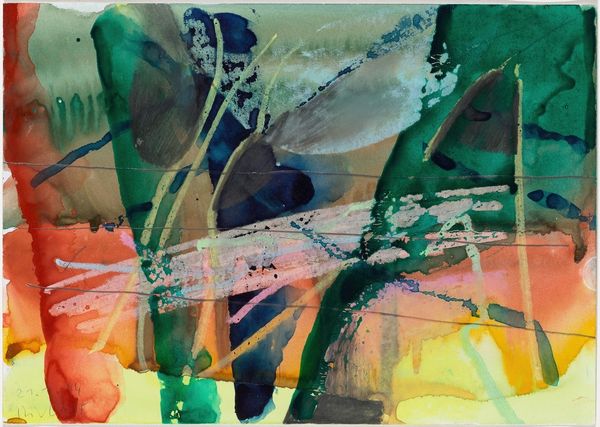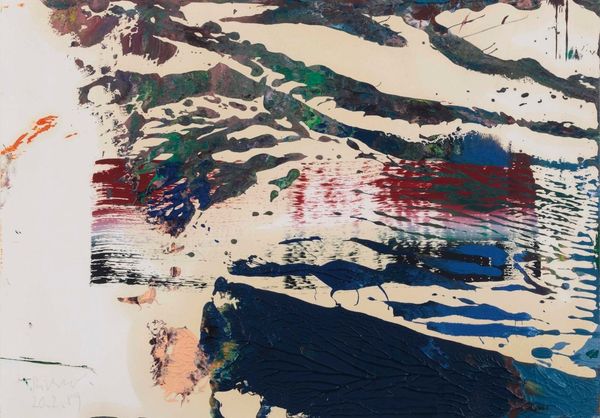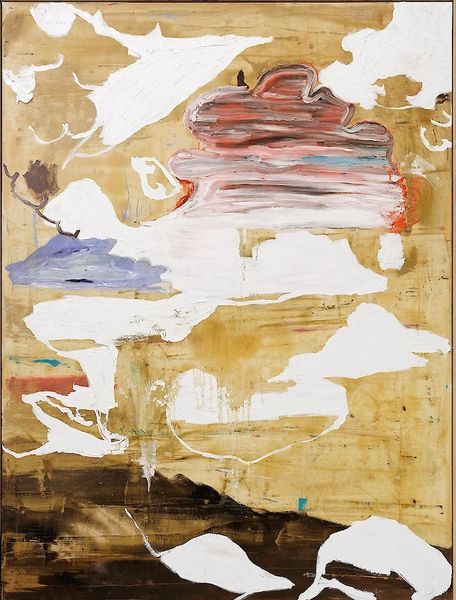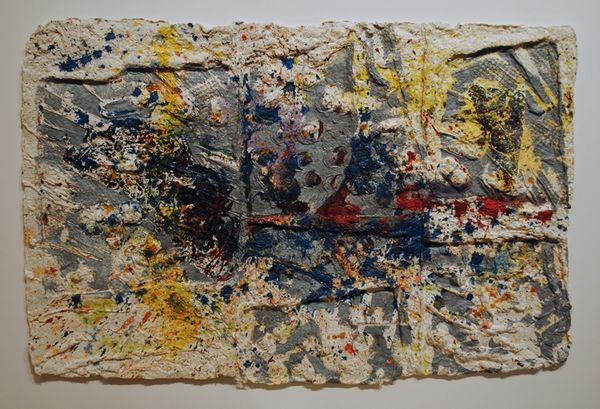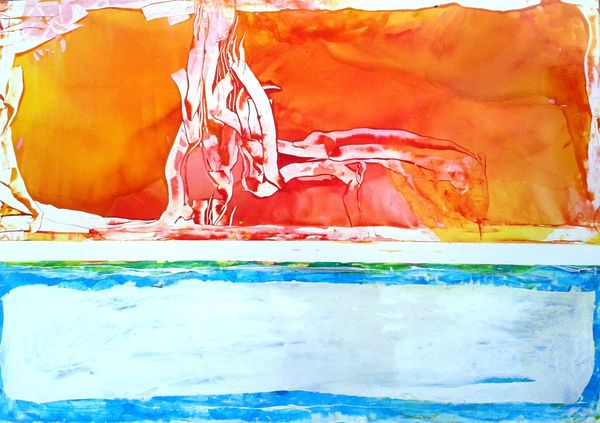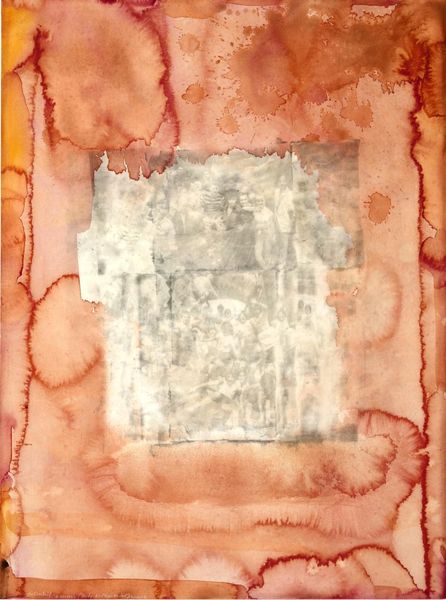
Dimensions: support: 800 x 1003 mm
Copyright: © The estate of Dieter Roth | CC-BY-NC-ND 4.0 DEED, Photo: Tate
Editor: This is Dieter Roth's "Self-Portrait as a Drowning Man," currently residing at the Tate. The materials look like a combination of paint and resin. I find the layered effect and the translucence quite striking. What do you make of the composition? Curator: The composition demonstrates a tension between representation and abstraction. Note how Roth uses color—primarily blues and browns—to suggest depth and form, yet the dissolution of the figure challenges our perception of a traditional portrait. Editor: So, the very act of obscuring the figure IS the statement? Curator: Precisely. The layered materials and decaying image become metaphors for the self in distress, don't you think? It prompts us to question the boundaries of identity itself. Editor: I see, it's not just a portrait of a drowning man, but a portrait *about* drowning, in a more metaphorical sense. Curator: Precisely. Perhaps we both have a clearer understanding of how Roth uses form to convey a powerful sense of existential unease.
Comments
tate 6 months ago
⋮
http://www.tate.org.uk/art/artworks/roth-self-portrait-as-a-drowning-man-t02209
Join the conversation
Join millions of artists and users on Artera today and experience the ultimate creative platform.
tate 6 months ago
⋮
Roth made self-portraits in a variety of media throughout his career, particularly during the mid-1970s. This work was made in Iceland, where Roth periodically lived and worked. In order to bring the work to London in his suitcase, he cut it into a number of pieces. This gesture was characteristic of Roth’s irreverent approach to the art object. He was especially open to changes that would occur after he had ‘finished’ the work, such as the process of cracking which is visible here. Gallery label, May 2009
